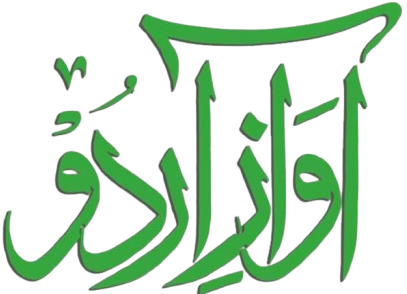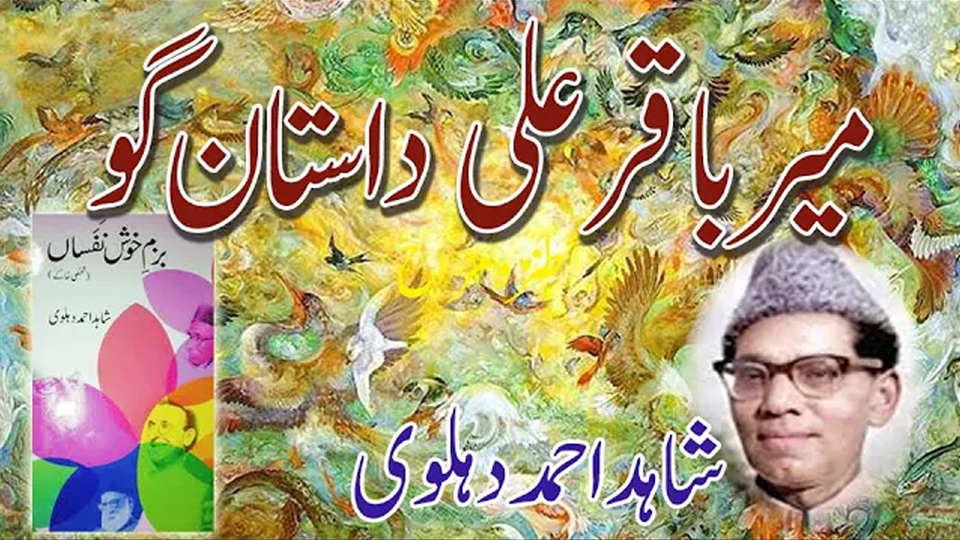Urdu storytelling is an ancient and mesmerizing tradition that has enriched literature with its expressive narration, vivid imagery, and imaginative depth. This art form transports listeners into a world where reality and fantasy merge seamlessly. Influenced by Persian and Arabic storytelling traditions, Urdu storytelling reached its peak through classical tales filled with supernatural elements, grand adventures, romance, and complex plots. However, with time, novels and short stories replaced this tradition, yet its magic continues to define Urdu literature.
Mir Baqar Ali: The Last Great Urdu Storyteller
Mir Baqar Ali, often regarded as the last great storyteller of Delhi, was a master of this art. His ability to captivate audiences through detailed descriptions, character depth, and dramatic delivery was unparalleled. Shahid Ahmed Dehlvi, a notable Urdu writer, documented his life and legacy in the famous essay Dilli Ke Akhri Dastango (The Last Storyteller of Delhi), included in his book Bazm-e-Khush Nafsaan.
This book, compiled by Dr. Jameel Jalibi, is a collection of 26 literary sketches originally published between 1958 and 1967 in various magazines. It presents a fascinating depiction of notable literary personalities of the subcontinent, highlighting their habits, contributions, and cultural environments. Dehlvi’s writing style is engaging, blending biography with artistic storytelling, making his sketches a delightful read. His prose, enriched with humor, idioms, and narrative fluidity, turns these essays into compelling literary pieces rather than mere historical records.
The Magic of Mir Baqar Ali’s Storytelling
In a special feature by AwazeUrdu, Shahid Ahmed Dehlvi’s essay on Mir Baqar Ali has been brought to life through narration. Mir Baqar Ali was known for his extraordinary ability to extend stories over long durations without losing audience engagement. His speciality was narrating Dastan-e-Amir Hamza, an epic filled with thrilling adventures, mysticism, and heroism. His masterful voice modulation, expressive gestures, and detailed storytelling painted vivid pictures in the minds of his listeners.
Mir Baqar Ali’s performances were the highlight of gatherings among nobles and aristocrats. However, as times changed and storytelling lost its central place in Urdu literary culture, he faced financial difficulties in his later years. Though he authored books, his spoken storytelling had a magic that could not be fully captured in written form. His legacy, however, remains a cherished chapter in Urdu literature.
Bazm-e-Khush Nafsaan: A Literary Gem of Urdu Storytelling
Shahid Ahmed Dehlvi’s Bazm-e-Khush Nafsaan is an invaluable contribution to Urdu literature, offering readers a nostalgic glimpse into a fading era of storytelling. This book serves as both a tribute to the art of Urdu storytelling and a testament to the linguistic and cultural richness of the past. It is an essential read for anyone interested in Urdu literature and the heritage of the Indian subcontinent.
Despite traditional storytelling’s decline, platforms like AwazeUrdu are crucial in preserving this heritage by bringing classical Urdu stories to modern audiences. The revival of interest in audiobooks and narrated storytelling offers hope that this timeless tradition will continue to inspire future generations.
If you’re interested in reading this book, click the link below for a free download.
https://drive.google.com/file/d/1ltmU7rKw5Um2lFlenzIIRNI5szAQYXw0/view?usp=sharing
If you’d like to listen to this book in audio format, click the CONTACT button below to get in touch with the AwazeUrdu team to order the audiobook.
You can also watch the same video on these social media platforms.
فنِ داستان گوئی اردو ادب کی ایک قدیم اور دلکش روایت ہے، جس میں قصے کہانیوں کو اندازِ بیان، الفاظ کے چناؤ اور تخیل کی رنگینی سے سنوار کر پیش کیا جاتا ہے۔ یہ فن سننے اور پڑھنے والے کو ایک ایسی دنیا میں لے جاتا ہے جہاں حقیقت اور تخیل گھل مل جاتے ہیں۔ داستان گوئی کی روایت فارسی اور عربی ادب سے متاثر ہو کر اردو میں آئی اور کلاسیکی داستانوں نے اس فن کو عروج بخشا۔ داستانوں میں مافوق الفطرت عناصر، حیرت انگیز مہمات، رومانویت اور پیچیدہ پلاٹ اہم کردار ادا کرتے ہیں۔ وقت کے ساتھ ساتھ ناول اور افسانے نے اس صنف کی جگہ لے لی، لیکن داستان گوئی کا حسن اور اس کی سحر انگیزی آج بھی اردو ادب کی پہچان ہے۔
میرباقرعلی دلی کےایک روایتی داستان گو تھے، جن کے بارے میں شاہداحمددہلوی نےایک مضمون” دلی کےآخری داستان گو” کےعنوان سے اپنی کتاب بزمِ خوش نفساں میں تحریرکیاہے۔ یہ کتاب شاہد احمد دہلوی مرحوم کے 26 خاکوں پر مشتمل ایک دل چسپ مجموعہ ہے، جسے ڈاکٹر جمیل جالبی نے مرتب کیا۔ یہ خاکے ۱۹۵۸ء سے ۱۹۶۷ء کے درمیان مختلف رسائل میں شائع ہوئے اور بعد میں کتابی شکل میں یکجا کیے گئے۔ شاہد احمد دہلوی نے ان میں برصغیر کی نامور ادبی شخصیات کے کردار، عادات اور تہذیبی ماحول کو منفرد انداز میں پیش کیا ہے۔ ان کی نثر رواں، شگفتہ اور محاوراتی رنگ سے مزین ہے، جو ان خاکوں کو محض سوانحی تحریریں نہیں رہنے دیتی، بلکہ انہیں ایک تخلیقی رنگ دے دیتی ہے۔ ڈاکٹر جمیل جالبی نے ان بکھری ہوئی تحریروں کو یکجا کرکے اردو ادب کے قارئین کے لیے ایک قیمتی خزانے کی صورت میں محفوظ کر دیا ہے۔
میرباقرعلی کےبارے میں اس کتاب میں شاہداحمد دہلوی کا مضمون آوازِاردوکی اس ویڈیومیں پڑھ کرسنایاگیاہے، جن کی داستان سرائی کی مہارت اور تفصیل پسندی اپنی مثال آپ تھی۔ وہ نہ صرف داستانوں کو طویل عرصے تک کھینچنے کا ہنر رکھتے تھے بلکہ کرداروں، مقامات اور اشیاء کی جزئیات بیان کرنے میں بھی کمال رکھتے تھے۔ داستانِ امیر حمزہ کو سنانے میں وہ اس قدر مہارت رکھتے کہ سامعین حقیقت کا گمان کرتے۔ ان کی گفتگو میں الفاظ کا جادو، آواز کے اتار چڑھاؤ اور جسمانی حرکات داستانوں کو مزید مؤثر بنا دیتے۔ وہ نوابوں اور رئیسوں کی محفلوں کی جان تھے، لیکن وقت کے ساتھ ساتھ داستان گوئی کی روایت کمزور پڑ گئی، اور ان کی زندگی کا اختتام مالی مشکلات میں ہوا۔ انہوں نے کچھ کتابیں بھی لکھیں، مگر ان کی تقریر کی تاثیر تحریر میں منتقل نہ ہو سکی۔ ان کا اندازِ بیان اور فنِ داستان گوئی کا جوہر آج بھی اردو ادب میں ناقابلِ فراموش ہے۔
یہ کہنا بے جا نہ ہوگا کہ بزمِ خوش نفساں اردو خاکہ نگاری کی ایک لازوال کتاب ہے، جو نہ صرف ہمیں ماضی کی معطر فضا میں لے جاتی ہے بلکہ اردو نثر کے اعلیٰ معیار سے بھی روشناس کراتی ہے۔ یہ کتاب ہر اس قاری کے لیے دلچسپی کا باعث ہے جو اردو ادب اور برصغیر کی تہذیبی تاریخ سے محبت کرتا ہے

